Flashback: Stanford University reboots with new Central Energy Facility, a 2017 AIA COTE Top Ten Green Project
By Justine Testado|
Tuesday, Apr 25, 2017

Related
Stanford University's new Central Energy Facility replaced the school's aging central cogeneration plant, which ran on 100 percent fossil fuel and primarily on electrical power. Designed by a team led by ZGF Architects, the new Central Energy Facility comprises a net-positive energy administrative building equipped with top-notch district heating and cooling technology to reduce greenhouse-gas emissions and fossil fuel and water use.
The AIA COTE recently named the facility as one of their 2017 Top Ten Green Projects. Scroll down for more.

“In 2011, Stanford University examined options to replace its aging central cogeneration plant, looking holistically at 35-year lifecycle costs, and considering its commitment to carbon neutrality.”
With a total area of 534,019 square feet, the Central Energy Facility, which was completed in 2016, “comprises a net positive energy administrative building, a heat recovery chiller plant, a cooling and heating plant, a service yard, and a new campus-wide main electrical substation.”
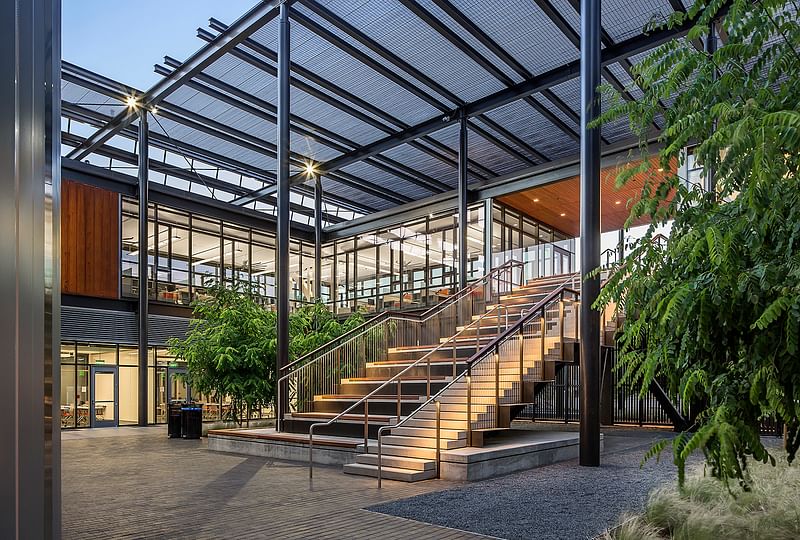

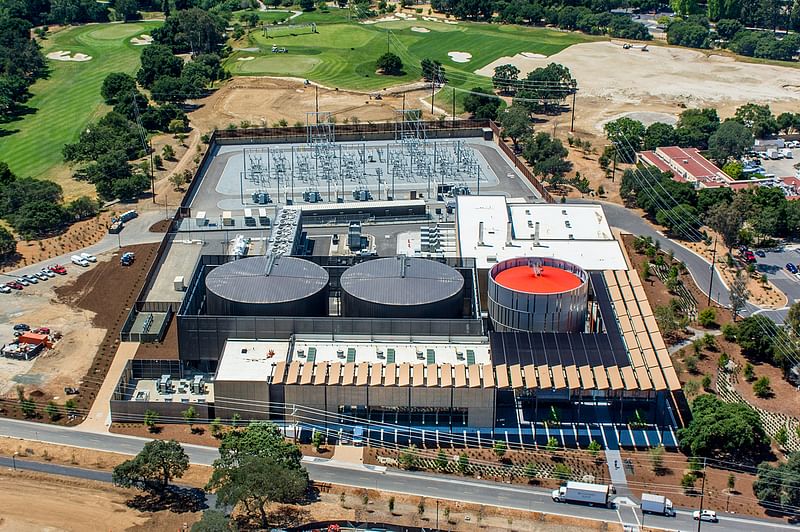
“Designed to sensitively integrate into the surrounding campus, the architectural expression is one of lightness, transparency and sustainability to express the facility’s purpose.”
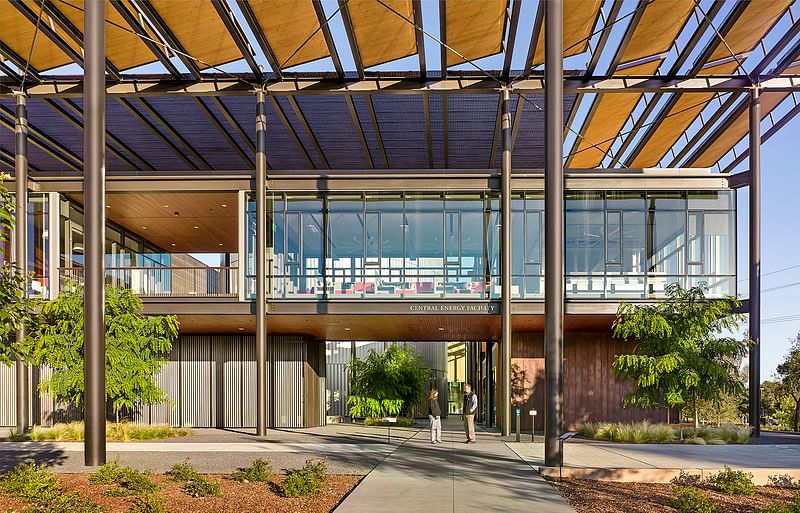
“It transforms what would be a typical unappreciated energy plant into a classroom and a moment of architectural joy,” the AIA COTE competition jury noted. “A naturally ventilated, daylit work environment is provided for facilities staff who would normally be in a windowless basement. It sets a high bar for a university to provide national environmental leadership and design excellence."

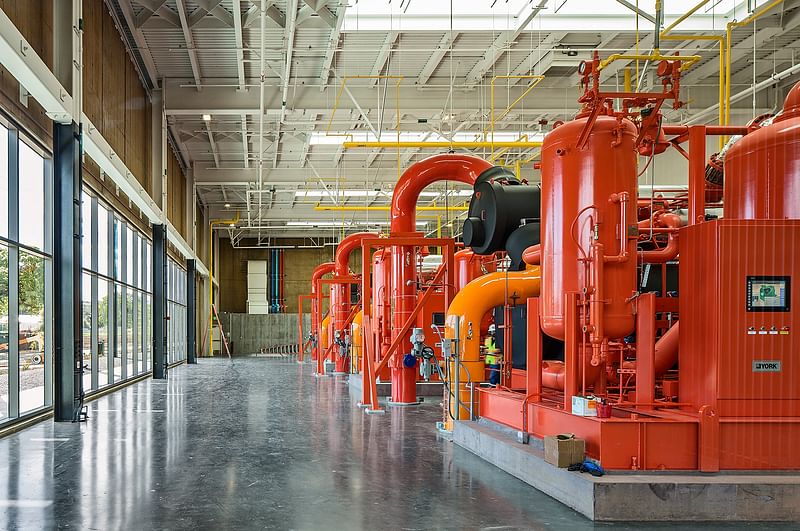
“Stanford’s Energy and Climate Plan identified significant and simultaneous needs for both heating and cooling in its buildings due to its diverse programs (including healthcare and research labs) and sophisticated building systems.
Based on this synergy, the Central Energy Facility project replaces the older natural gas-powered cogeneration plant and campus steam loop with an electricity powered ‘regeneration’ plant that supplies hot and chilled water to the campus and hospitals.”
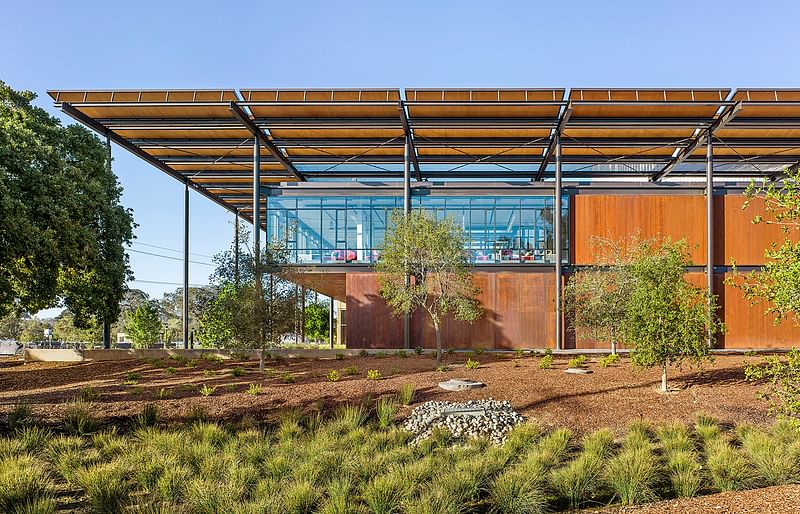

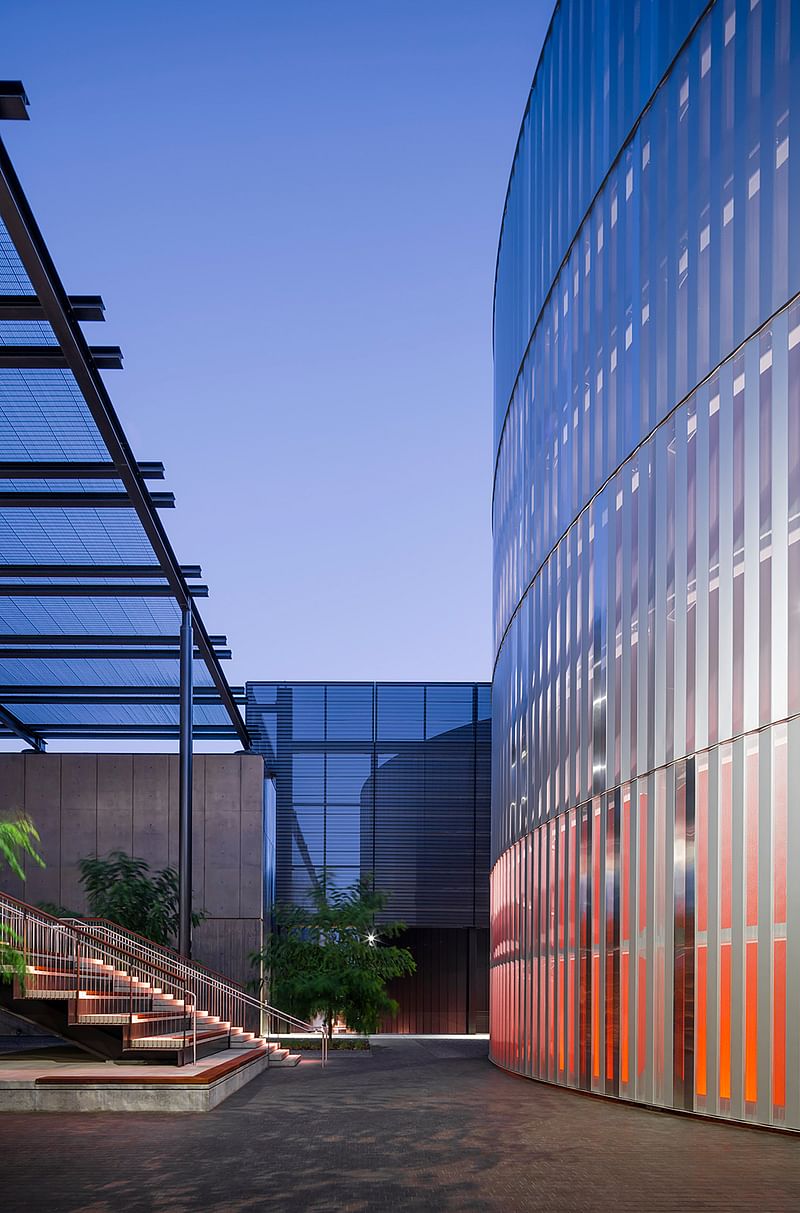
“The waste heat in the chilled water return loop is being ‘recovered’ to supply 93 percent of the heating and hot water required for campus buildings. This singular project reduces overall campus emissions by 68 percent and potable water usage by 18 percent, thereby saving an estimated $420 million over the next 35 years.”
Check out more project diagrams in the gallery. In case you missed them, see more of the 2017 COTE Top Ten Green Projects in the links below.
All photos and quoted text courtesy of the AIA.

RELATED NEWS 2017 AIA COTE Top Ten Green Projects revealed





Share
0 Comments
Comment as :